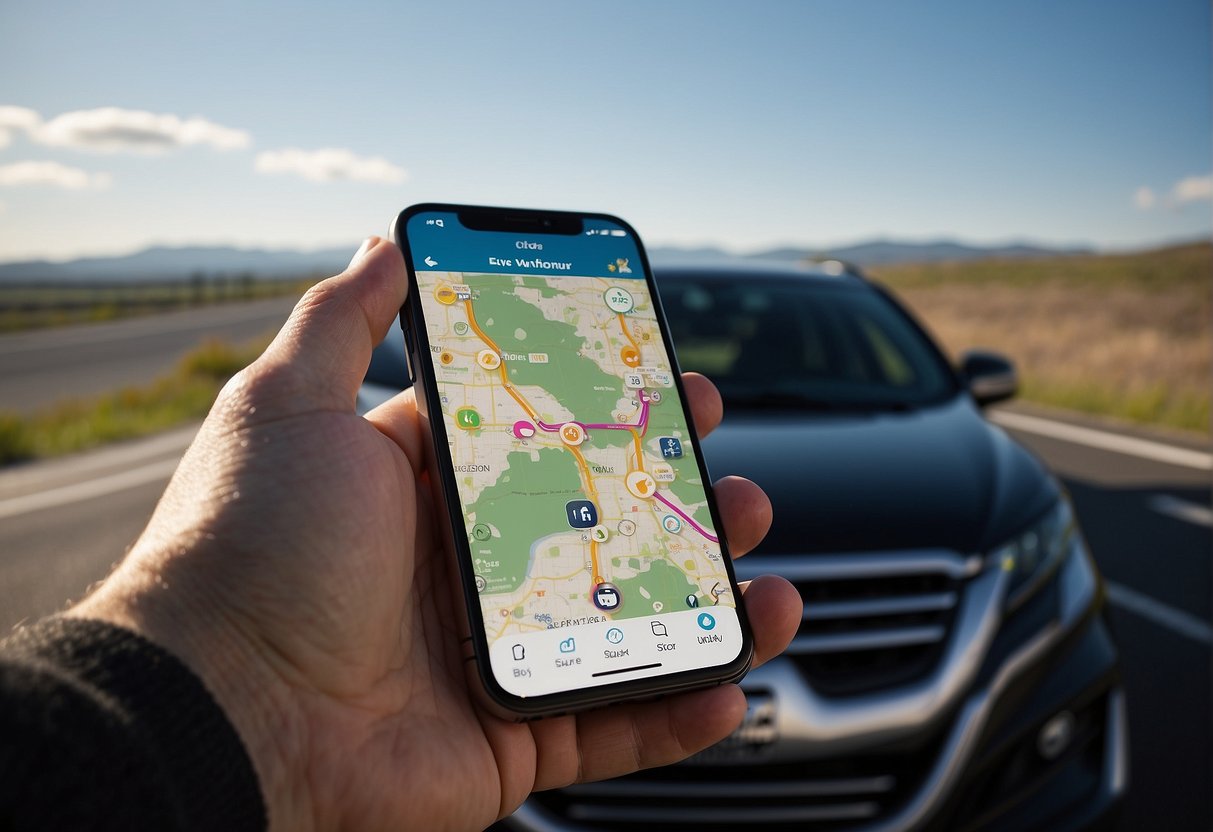When planning a road trip, checking the weather is as crucial as packing essentials. Unpredictable weather can quickly transform a leisurely drive into a challenging ordeal. We rely on accurate forecasts not only for convenience but also for safety. Severe weather alerts are integral for travel preparedness, ensuring we can anticipate and navigate around harsh conditions. Whether it’s clear skies, potential storms, or fluctuating temperatures, staying informed helps us make smarter travel decisions.

Travel weather apps have become indispensable tools for road trippers. These applications give us real-time updates and forecasts tailored to our specific routes. The precision of these tools allows us to adjust our departure times, plan stops, and even modify our chosen path to circumvent poor weather conditions. By utilizing these apps, we minimize the risks associated with driving in hazardous weather, thus protecting ourselves and our travel companions.
Incorporating severe weather alerts into our travel plans isn’t just about convenience—it’s a safety imperative. These alerts keep us ahead of conditions that could severely impact driving, such as ice, high winds, or visibility concerns. Equipped with this knowledge, we have the power to make informed decisions, ensuring our journey is not only enjoyable but also secure.
JUMP TO TOPIC
Planning Your Road Trip Itinerary
Crafting the perfect road trip itinerary involves coordinating the ideal departure time with the safest driving routes to ensure a smooth journey. These factors greatly influence the experience and safety of our trip.
Determining the Best Departure Time
Optimal Timing:
To pick the best time to leave, we consider the following:
- The weather forecast for our departure day.
- Traffic patterns along our chosen route.
– 🌡️ Local weather conditions for the date of departure.
– ⏰ Time of day with lighter traffic.
– 🏁 Event schedules or peak travel seasons that could affect traffic.
Selecting a departure time also depends on our travel goals. Is it watching the sunrise as we drive? Or avoiding rush hour? We decide what’s crucial and plan accordingly.
Selecting the Safest Driving Route
The route we take can determine the success of our road trip. We prioritize safety over speed or distance.
Safety First:
Factors we keep in mind for the driving route:
- The current weather conditions along different possible routes.
- The presence of construction zones that could pose detours or delays.
- Road type, as highways might be safer than rural roads, depending on weather and time of day.
| Road Choice Considerations | Impact on Safety |
| Weather adaptability of route | Reduces risk of weather-related delays or accidents |
| Road size and condition | Affects maneuverability and accident risk |
| Traffic density | Influences driving stress and potential for collisions |
By considering all these details, we plan our driving route to align with a balance of efficiency and precaution.
Impact of Weather Conditions on Road Trips
Before we embark on a journey, understanding how weather can affect the route is crucial for safety and efficiency. We’ll look at interpreting forecasts and managing risks related to different types of weather.
Interpreting Weather Forecasts for Travel
When we check the weather forecast, we’re looking for specific conditions that could affect our trip. For instance, temperatures influence tire pressure and engine performance.
- 🌡️ Temperatures: Check if extreme heat or cold is predicted.
- 💨 Wind: High winds can make driving challenging, especially for high-profile vehicles.
- 🌧️ Rain: Amount and duration can signal potential flooding.
- ❄️ Snow: Monitor accumulation forecasts to assess road closure risks.
We also examine visibility issues, such as fog, which can significantly reduce reaction time and make driving hazardous.
Managing Risks: From Precipitation to Visibility
To manage risks, we adapt our plans according to the forecasted weather conditions.
| Weather Type | Impact on Travel | Risk Management |
| Rain/Snow | Reduced traction, visibility | Slow down, increase following distance |
| Fog | Severely reduced visibility | Use fog lights, drive cautiously |
| Bad Weather | Potential route blockages | Plan alternative routes |
Risk management especially matters for precipitation and visibility factors such as rain, snow, and fog:
- For rain and snow, we reduce speed and maintain a safe following distance to prevent accidents.
- With fog, using the appropriate lights and not relying solely on auto-drive features is important, as sensors may be impaired.
Leveraging Technology for a Safe Journey
Before we embark on a road trip, it’s crucial to anticipate weather conditions to ensure safety and efficiency. With the right technology, we can effectively navigate uncertain skies.
Best Travel Weather Apps and Features
🌡️ Weather App Highlights
We rely on robust weather apps that provide real-time forecasts and alerts for our trips. Apps like Highway Weather offer features such as adding stops and receiving departure recommendations based on forecasts. Others, like Weather On The Way, display weather conditions for your expected travel times and suggest alternative routes if necessary.
| App Feature | Benefit |
| Dynamic Route Planning | Adjusts travel plans for weather conditions |
| Forecasts and Alerts | Stay ahead of extreme weather |
How to Stay Informed on the Go
🚗 Seamless Navigation and Tracking
Staying updated means having navigation and tracking that work hand-in-hand with weather insights. Weather Radar Free, for example, offers eight-day forecasts, radar maps, and hourly forecasts to help us make informed decisions on the road.
- Download capabilities for offline navigation
- User support for real-time assistance
- Weather and route tracking for current updates
- How to Fix Car AC Not Cooling Properly - November 22, 2025
- How to Check Wheel Alignment at Home (Simple DIY Guide) - November 22, 2025
- Why Headlights Turn Yellow and How To Prevent It - November 4, 2025